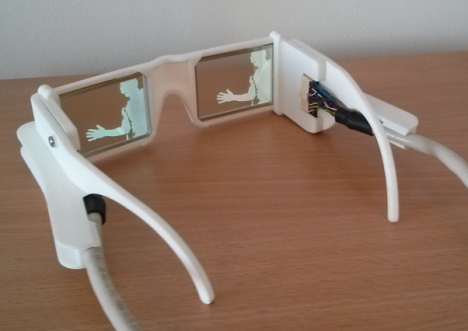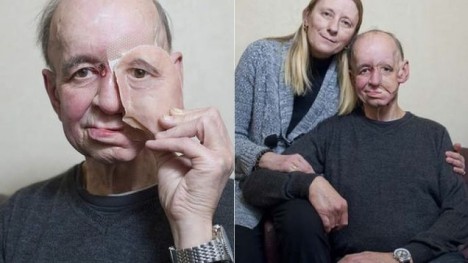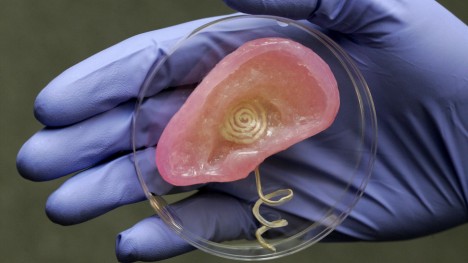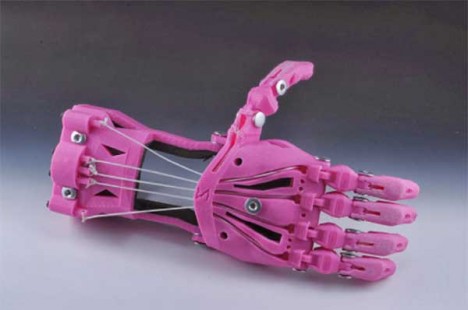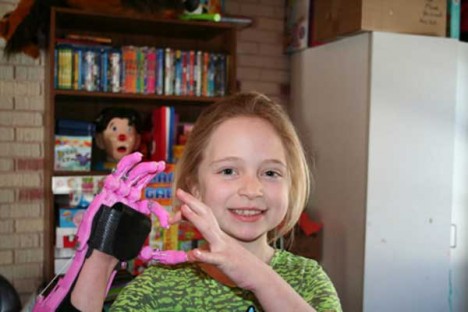3D Printed Glasses Help the Blind
Cameras and sensors on these 3D printed glasses sense depth and movement in a room and display the objects on a transparent OLED screen so people with extremely limited vision can ‘see’ the objects in their environment. That creates depth perception for scenes that would otherwise be a blur, making it much easier to navigate.
Incredibly Realistic Facial Prosthetic
A man who was significantly disfigured by the removal of a tennis ball-sized tumor on the left side of his face can now navigate the world without being gawked at. Doctors used CT and facial scans of what was left of Eric Moger’s skull to recreate the missing portion, 3D printing an incredibly realistic prosthetic that not only gives him a normal appearance but also helps him eat and drink normally again.
Bionic Ear
Using an off-the-shelf 3D printer, researchers created a bionic ear that dramatically enhances hearing. They 3D-printed cells and nanoparticles and combined a small coil antenna with cartilage for a result that can pick up radio frequencies a million times higher than normal human ears, giving wearers a sort of ‘superpower.’
Hands for Disabled Children
Children born with missing or deformed fingers can do just about anything their friends can do with the assistance of 3D-printed prosthetic hands, which can cost as low as $50 to create. The E-Nable project pairs up makers with families who need help, with members creating entire devices for children or guiding them through the printing and assembling process themselves.
